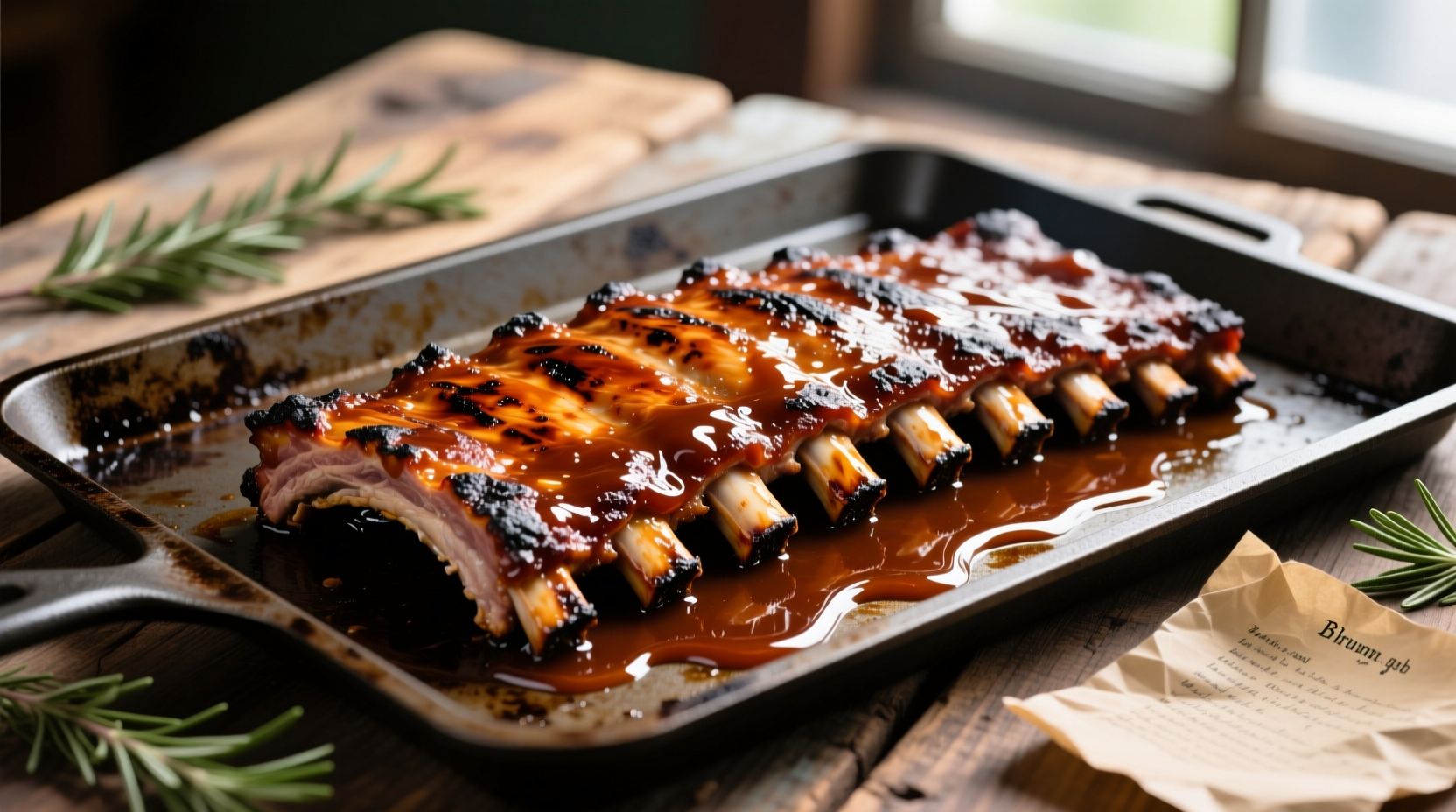Why Oven-Baked Spare Ribs Beat Other Methods
Many home cooks struggle with tough, dry ribs or complicated setups requiring special equipment. The oven method delivers consistent results without a smoker or grill. According to USDA Food Safety guidelines, pork must reach a minimum internal temperature of 145°F, but for tender ribs, you'll need to go much higher—195-205°F—to break down collagen properly. USDA recommends using a food thermometer to verify doneness.

Your Step-by-Step Path to Perfect Oven Ribs
Prep Like a Pro: The Foundation of Flavor
Start with selecting quality meat. Look for "St. Louis cut" spare ribs with even thickness and good marbling. Remove the membrane from the bone side—this crucial step prevents shrinkage and allows seasoning to penetrate. Use a paper towel to grip the edge, then pull in one smooth motion.
Apply a balanced dry rub using the 3-2-1 ratio: 3 parts paprika, 2 parts brown sugar, 1 part salt. Add complementary spices like garlic powder, onion powder, and black pepper. Massage the rub thoroughly into all surfaces, including between bones. Let the ribs rest uncovered in the refrigerator for at least 1 hour (or overnight) to develop flavor.
Optimal Oven Setup: Temperature and Equipment
Preheat your oven to 275°F—low and slow is key for tender ribs. Position the oven rack in the center. Line a rimmed baking sheet with heavy-duty foil (shiny side up), then place a wire rack on top. The foil catches drips while the rack elevates ribs for even cooking.
| Cooking Method | Time Required | Texture Result | Best For |
|---|---|---|---|
| Oven (275°F) | 2.5-3 hours | Fall-off-the-bone tender | Weeknight meals, consistent results |
| Grill (indirect) | 4-5 hours | Firm but tender | Smoky flavor preference |
| Slow Cooker | 4-6 hours | Very tender, less texture | Hands-off cooking |
The Cooking Process: Timing and Technique
Place seasoned ribs bone-side down on the prepared rack. Roast uncovered for 2 hours, then check internal temperature. Continue cooking until ribs reach 165°F internally. For extra tender results, wrap ribs tightly in foil with 1/4 cup apple juice or broth (the "Texas crutch" method) and return to oven for 45-60 minutes until internal temperature reaches 195-205°F.
This method works best when you need reliable results without weather dependence. It's not ideal when you specifically want smoky flavor from wood chips, which requires a grill or smoker. The oven method shines for weeknight dinners when time is limited compared to traditional smoking.
Finishing Touches: Sauce Application and Caramelization
Remove ribs from oven and brush generously with your favorite barbecue sauce. Switch oven to broil and position rack 6 inches from heat source. Broil for 3-5 minutes until sauce bubbles and caramelizes, watching carefully to prevent burning. Let ribs rest for 10 minutes before slicing between bones.
Serving and Storage Tips
Serve with extra sauce on the side and classic sides like coleslaw and cornbread. Leftover ribs store well in an airtight container in the refrigerator for up to 4 days. Reheat in a 300°F oven until warmed through—never microwave, which makes ribs rubbery.
Avoid These Common Oven Rib Mistakes
Don't skip removing the membrane—it creates a chewy barrier that prevents seasoning penetration. Avoid high oven temperatures thinking it will cook faster; this results in tough meat. Never apply sauce too early—the sugar burns before ribs become tender. And crucially, don't cut ribs before checking internal temperature; visual cues alone can't confirm doneness.











 浙公网安备
33010002000092号
浙公网安备
33010002000092号 浙B2-20120091-4
浙B2-20120091-4